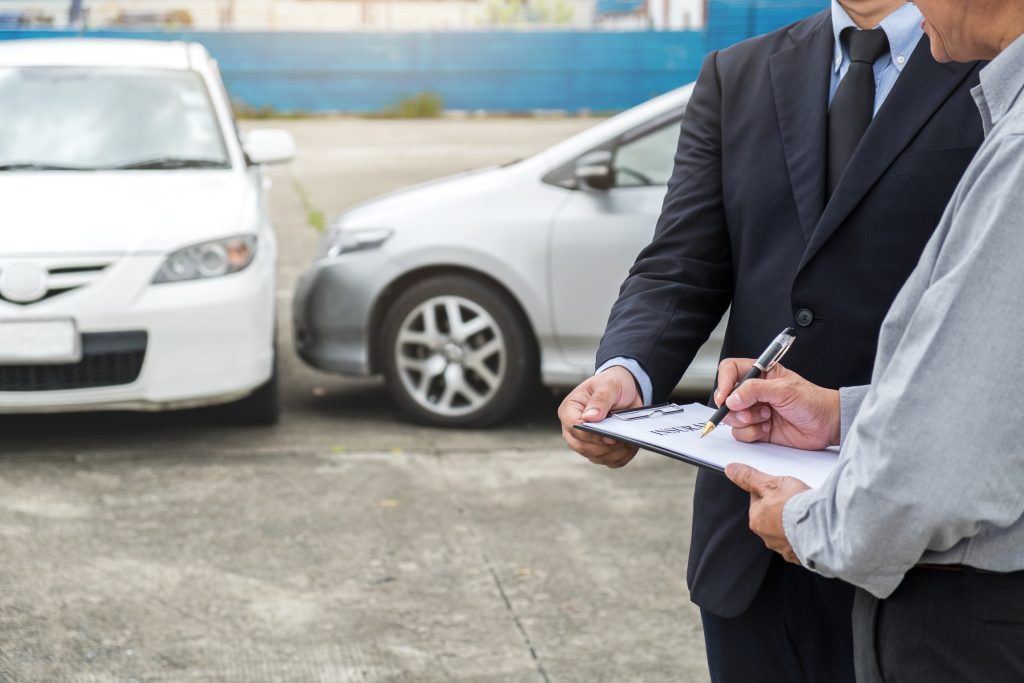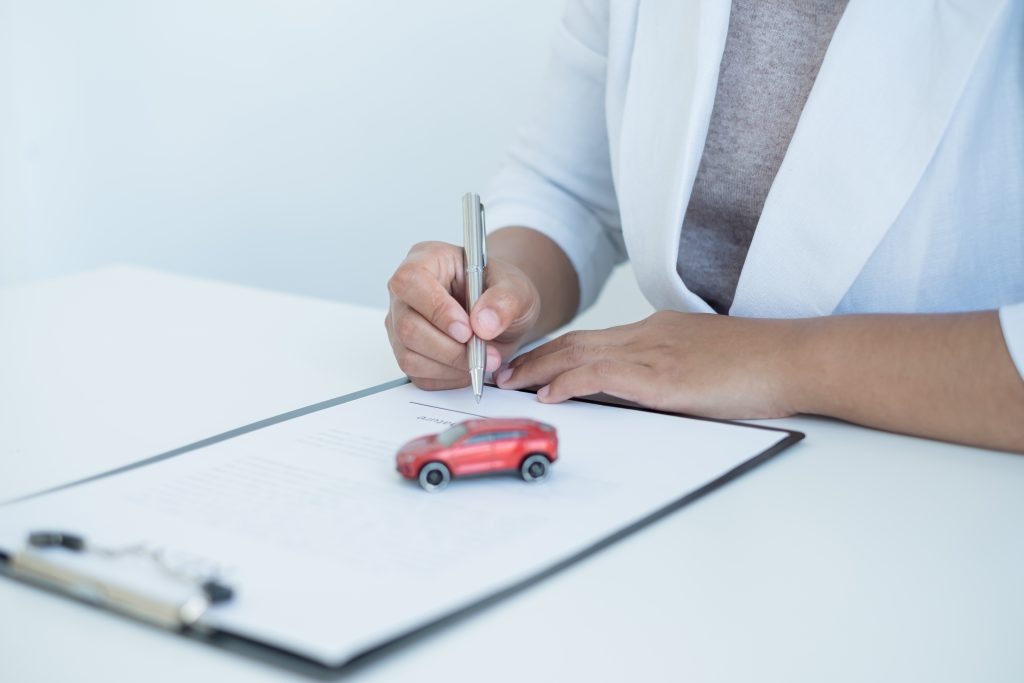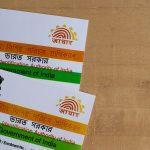With some states (Tamil Nadu and Madhya Pradesh) recording the highest number of road accidents in the country in 2019), it becomes imperative to consider driving with utmost caution. Regardless, when you get on the road with the pride and joy of your life, your shiny car, you want to be protected against mishaps or accidents. Hence, what is first party insurance in this type of insurance refers to the person buying the insurance policy. They will be covered by it and make claims under the policy.
What is First Party Car Insurance?
All insurance policies are essentially a contract between two entities: the insurer, the person buying the insurance policy, and the insurance provider. Car insurance is no different: it is essentially a legally binding contract between the car owner and the insurance company. In this contract, the first party is the person who buys the car insurance policy and usually also owns the car. This is the big cheese of the policy: when you’re the first party of the policy, you are responsible for paying the premiums and will receive the payout when claims are filed. The second party, on the other hand, simply refers to the insurance company responsible for holding up the other end of the bargain if things go awry on the road.

There is also a third party in car insurance. (This is the last party, we promise.) The third party refers to anyone other than yourself and the insurance provider who is somehow impacted by your driving and is involved in the insurance claim process. Under most car policies, the insurance provider is responsible for any damages caused by the first party’s driving to a third party. Let’s say you’re driving and accidentally bump a pedestrian, and they break their arm as a result. If your car is insured, your insurance will take care of the medical costs for the pedestrian, and you won’t have to pay them anything from your own pocket.
When you buy a car, you have the option to buy two kinds of insurance: first-party and third-party car insurance. First-party insurance is also known as comprehensive insurance, and while we’ll get into the details of what exactly this means, it offers full protection against road accidents to you and anyone else who might be affected by your driving. Every car on Indian roads needs to be insured with third party insurance to be considered roadworthy legally.
Features and Benefits of First Party Insurance
This table below will tell you everything you need to know about the features of first-party car insurance:
- Accidental coverage: The first party is also entitled to a personal accident cover of Rs. 15 lakh under this type of motor insurance policy to cover accidental death or incapacity of the owner or driver of the insured vehicle.
- Legal and financial coverage: A first party insurance coverage for motor offers financial and legal protection to the policyholder. By providing both a third-party liability cover and financial protection against the insured car’s own damages, it satisfies the necessary legal requirements.
- Benefits of NCB: A policyholder with first-party auto insurance may also benefit from a No Claim Bonus, or simply NCB, the incentive for each year without a claim, which may be applied to a reduction on the renewal of the policy.
- Additional coverage: Additionally, first-party insurance coverage can be improved by purchasing add-ons for a further fee.
Key Takeaways:
- Understand how first party insurance works and how it is similar to usual insurance policies.
- Everything about what is first party insurance is and how its covers.
- What is first party insurance- its in-depth understanding and an overview of the renewal plans.
- A better understanding of the process of filing a claim for first party insurance.
Coverage Under First-Party Car Insurance
First-party car insurance policies are also known as comprehensive car insurance. This isn’t an exaggeration: first-party insurance covers any damage that may be caused to the first party’s car due to any unforeseen or unexpected events. So if there’s an earthquake or an action movie hero falls on your car and flattens it, your first-party insurance will take care of the damages. This may be small comfort if you’re a bystander in an action movie, though.
In the real world, first-party car insurance means full insurance against events such as natural disasters (floods, earthquakes, storms, etc.), man-made disasters (action movie heroes, strikes, protests, war, etc.), and even damage caused by slightly smaller scales, such as a fire, an accident, or theft.
There’s more – they weren’t lying when they said comprehensive. First-party insurance also covers the damage you, the first party, may cause to a third party, including physical injuries and even deaths in an accident. Furthermore, if you were to be gravely injured or, worse, die in an accident while driving, first-party insurance also offers cover for personal accidents.
This is basic coverage. Yes, you read that right because first-party insurance also includes the option to opt-in for add-on covers that offer cheeky extras on your first-party insurance policies. First-party car insurance prices also vary across insurance companies, as well as the terms of the policy and what add-ons you opt for. If you’re willing to pay higher premiums, you can opt for extras like zero depreciation policies, roadside assistance, cashless services at garages, and even engine protection. First-party insurance meaning complete protection.
What to Know to Buy First Party Insurance
When purchasing auto insurance, you should look for a policy with a high benefit level at a reasonable price. As a result, you should evaluate various policies to compare their features, costs and suitability. Insurance comparison tools are available online and offline. To locate the coverage that satisfies your needs, you can compare insurance products online quickly, easily and conveniently. Doing so can assure you value for money, provide better coverage options and leverage better services- all at the same time.

Did You Know?
When you go ahead and get first party insurance, you become a priority member, and the facilities you get provided with are top-notch.
Where To Renew First Party Car Insurance
Given that you have already spent a significant amount of money on a car, you might be hesitant to get motor insurance coverage. We are aware of this and use our digital platform to streamline the process of purchasing or renewing auto insurance. Now, you can submit an insurance claim by following a few easy steps:
- Drop in your details: A car’s model, version or location are just a few variables that affect the cost of auto insurance. You can relax knowing that you won’t have to go through the effort of physically submitting all the required paperwork. You can now upload your supporting documentation online instead of registering your claim on paper.
- Receive a quote: To better understand the many policies that apply to your car, you can request a quote before moving forward with choosing your plan. You only need to supply your contact information and your car’s registration number.
- Choose the most appropriate plan: The insurance plan that best suits your needs can then be selected. Make sure the policy you choose protects your automobile against accidents, theft and other disasters while covering all the essential needs. Additionally, it is best advised to think about some add-ons.
- Pay: You can cut back on paper transactions and always choose one of the many cashless payment options available, such as debit/credit cards, net banking, etc. Your car insurance would then arrive in the mail.
- Keep tabs on the renewal date: You can renew your auto insurance in just a few minutes. If the policy renewal is delayed by more than 90 days, you risk losing your NCB and having it reduced to zero.

Process to File a Claim Under First Party Car Insurance
You can submit a cashless vehicle insurance claim in a few easy steps. Here, these are mentioned:
- As soon as you can, let your insurance carrier know about the claim. By phoning the business’s number or using the website, you can do this online. Your claim will be formally documented, and you will be given a reference number (this will be used in further communication).
- The insurance company will then designate a surveyor. This is crucial in the insurance claim process for a car accident, and the surveyor will evaluate the harm done to your car (and any other, if applicable).
- The insurance will deliver a report, and based on that, repairs will be made at a network garage.
- Your insurance provider must receive a claim form from you, and the claim will be settled directly with the network garage that handles your vehicle’s repair.
Word to Remember
Leverage– When you use capital which is borrowed to invest. Leverage is made when expectations of profits are high.
What and What Not is Covered Under First Party Car Insurance
The policyholder or insured individual who purchases auto insurance is referred to as the First Party. Anyone who owns a car and purchases a car insurance policy to insure it qualifies as the First Party. First Party is in charge of choosing a third-party auto insurance plan or extending the coverage by selecting a comprehensive auto insurance plan. A car insurance policy grants the First Party access to a Personal Accident Cover (PA) of Rs. 15 lakhs. The first party may file a claim for the PA cover in accordance with the terms and conditions set forth in the liability-only policy or comprehensive policy. According to the Indian Motor Tariff, first-party people must have at least third-party insurance coverage for their vehicles. If they don’t own it, they can be subject to punishment.
Conclusion
Third-party insurance is pretty solid: you pay low premiums and remain legally in the right, and stay roadworthy. You’re sure you’re a great driver with a spotless track record. Why on earth would you pay the extra premiums for first-party insurance if you’re not going to need it?
Simply put: the world around you is unpredictable. We’ll take your word for your excellent driving skills – more on that in a minute. However, you can’t control the weather, natural disasters, or war breaking out. You can’t stop the neighbourhood kids from leaving a lovely little scratch on your car. You can’t stop others from bumping into your car and denting it in the mall parking lot. In other words, first-party car insurance protects you from losses that can arise for any number of reasons that you simply cannot control. Secondly, even if you’re the best driver you know, accidents happen. Won’t you be at peace knowing you’re covered?
FAQs:
All motorcycle owners are required by the Motor Vehicles Act of 1988 to carry third-party liability insurance. Although purchasing a first-party policy is not required, doing so will benefit you because it offers comprehensive coverage.
The third-party or TP car cover is one of India’s two types of auto insurance that protects the insured from third-party claims when the insured’s vehicle is at fault. This coverage will cover any financial obligations that result from the accident.
First-party insurance provides compensation for the covered car, its owner, and, if applicable, a third party. Only third-party property or person damages, injuries, or fatalities are covered under third-party insurance coverage.
Send the Insurance Company the Necessary Documents:
It contains papers like the FIR, the driver’s license, a copy of your insurance contract, the certificate of title for your car, etc.
According to the Motor Vehicles Act of 1988, every car in India must have at least third-party insurance to drive on public highways legally. You can continue purchasing third-party liability-only insurance if you don’t want to acquire first-party or comprehensive insurance.
The first party is the person under whom the vehicle is registered.
The second party is the company under whom the car is purchased.
Third party is the person who is affected by the first party.
Read more about Home Loan Insurance.




